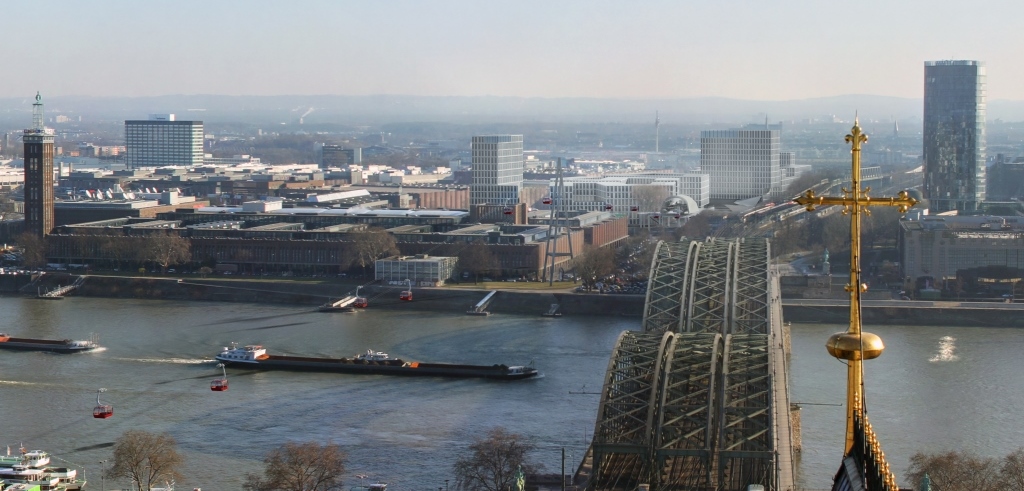
Cities, SI Urban 2/2020
Urban cable car master plan
Only now are initial cases emerging in which urban cable cars are being discussed in Germany as a normal part of local public transport, e.g. such as in Wuppertal, Bonn, Cologne, Siegen, Trier, Frankfurt, Munich and Stuttgart. However, these cases initially concern only selected corridors with specific transport issues. In Wuppertal, the connection to the university campus needed to be improved; ultimately the project failed because of opposition from residents in a referendum, even though the council, administration and public utilities had actively promoted it. In Bonn it is about connecting the hospital and the UN Campus, with the option of a Rhine crossing to Ramersdorf; a feasibility study examined 12 line variants, from which it shortlisted two preferred routes. The standardised evaluation to determine economic viability is currently underway. In Hamburg, a private-sector-devised cable car project to link the two Stage theatres on the Elbe with the jetties, which are well connected to the local public transport, failed in a district referendum.
Many cities are currently starting new feasibility studies for urban cable cars. In the north of Munich it is a connection between various radial railway lines between the English Garden and the BMW plant. In Frankfurt various projects are being discussed, and a more suburban cable car to extend a suburban railway route to the Feldberg and the edge of the Taunus mountains is being investigated specifically. In Stuttgart there are three different cable car options under discussion. In Reutlingen a cable car that runs tangential to the city centre is being investigated in addition to ongoing plans for a light railway. In Konstanz it is a cable car to connect the peripheral university campus. In Heidelberg the plan is for a cable car to cross the Neckar and to link the New Campus – for which a tram connection fell through after lengthy planning – to the main railway station and the rail network as well as a large P&R stop by the motorway. For Bremen, Kiel and Hannover, new cable car options are also being discussed. The most spectacular cable car idea is currently being discussed in Cologne – the so-called “Rheinpendel”, a 32-km addition of several sections crossing back and forth over the Rhine with 21 stations, which is intended as a bridge replacement and rapid purely parallel north-south connection that would have several innovative components with cable car intersections and junctions and therefore come closest to the model in La Paz. The previously stated range limit of 7 km is significantly exceeded here, as the intention is to minimise waiting times in the stations by means of a special logistics concept.
Master plans and planning stages
All of these examples are missing a comprehensive city-wide or regional requirement analysis, which clarifies where there is an urgent need for network expansion on the basis of an analysis of network gaps, and which then clarifies which gaps can be filled with which system responses (express bus, tram, light railway, suburban railway, cable car). Urban cable cars still enter into the discussion only for isolated individual corridors.
A suitable planning method for integrated planning begins with analysis of the existing local public transport system and especially the rail network for network gaps, expansion needs and connection potentials. It is then possible to clarify for which of these identified gaps cable cars could offer an appropriate solution. Then the phase of feasibility studies begins, to clarify where and how best to route the cable car in the corridor concerned. After this, the detailed planning commences, with selection of the system and its size, positioning of the supports and stations, and planning of the complementary measures on the rest of the local public transport network to produce useful connections. It must also be clarified who will operate the cable car(s) and what the fare structure should be (ideally integrated into the standard rates). The existing transport companies are envisaged as the operators.
Report by Professor Heiner Monheim







